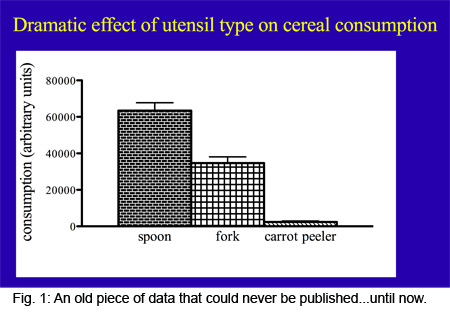Figshare is one of the greatest new tools for scientists. It allows you to publish any piece of data, no matter how small or insignificant, in a citable fashion. This is a big deal because ALL scientists have (tons of) data of this sort. Pilot experiments are performed to get the conditions right for the real experiments. And they never get published. The manuscript is written up or the paper is reviewed and some data is judged irrelevant or incomplete and is excluded. And never gets published. An experiment is performed and there is a null result, or the data are hard to interpret without further experiments, or the project doesn’t get funded, and so the project is dropped. And the experiment becomes nonexistent outside of the lab that performed it. There are many reasons why this should not be the case: 1) effort was spent on the experiment and so publishing it gives the scientist credit, 2) taxpayer money was spent on the experiment and so publishing these data gives back to the system that enables us to do this work in the first place, 3) data that are not useful or exciting to the scientist that acquired them can be incredibly useful and time-saving to other scientists that are working on related problems. The list could go on.

Figshare may not be the only option, and others will likely crop up in the near future, but it is a good example of a solution. We all know about the internet, right? A medium for immediately publishing anything you want? I’m a little baffled that this has taken so long.
For my part, in my spare time, I will be scouring my hard drive for findings that have been forgotten. The beauty of publishing in a place like Figshare is that it is easy. Most of these experiments have already been analyzed (I mean, they were graphed so that we could discuss what to do/not do with them, now it’s just a matter of uploading the already-presentable data). Also, there’s no obligation to discuss the data ad nauseum (you’ll see some data descriptions are pretty short) though some degree of explanation is required to make the data useful. Furthermore, should the story evolve, there’s no reason why it can’t be also published in a traditional journal format. Check out Nature Publishing Group’s policy – they’re ok with publishing data (even full manuscripts) on preprint servers prior to submitting to their journals.
Of course, some data may still not be “shareable” such as patient data or data that is closely related to an ongoing project. But interestingness should never be a factor in my mind, because you never know what will be valuable to others.
So, if you’re “just” a summer student who thinks your 2 months of work can’t possibly amount to hard, citable evidence, think again. Ask your boss first, but think again.
Yeah, I love the idea of FigShare, and have put a few extraneous figures from my thesis on there. On the flip side, I have not yet stumbled across anything on FigShare that I have found particularly interesting. This would obviously improve as more people post there.
Thanks, Jason. I did not know about this… it seems really interesting. As you know, I am keen on the prospect of sharing data to extend science, as are you. Though, I must admit, I have not felt the pressures of publishing, yet! I’ll definitely bookmark the site, though. I think it’s valuable, especially because, “Let do this!” wait.. has it already been done with null results and people haven’t published it? I wish there were a journal of “Null Results: Predictions Unpredicted”. Maybe you should start it?
There is a journal like this already! http://www.jnrbm.com/
…or rather, “Null Results” Unpredicted Predictions” — the sister companion.
+ : -“